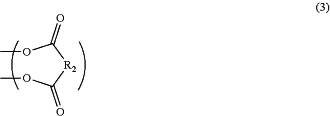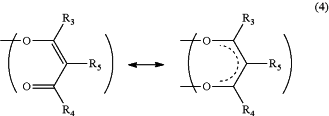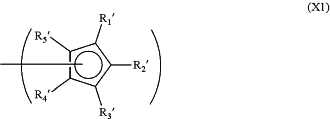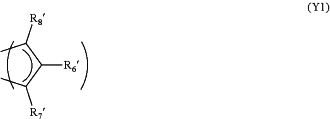| CPC C07C 1/325 (2013.01) [B01J 31/2438 (2013.01); B01J 2231/64 (2013.01); C07C 2603/66 (2017.05)] | 17 Claims |
|
1. A method for producing a cyclic olefin compound, comprising:
a step of producing acyclic olefin compound by decarbonylating and decarboxylating an alicyclic dicarboxylic acid anhydride in presence of a divalent nickel complex represented by General Formula (1),
wherein the divalent nickel complex includes at least one anionic ligand Y represented by any of General Formulae (2) to (7), (X1), and (Y1),
Ni(Y)m(L)n (1)
wherein Ni is divalent nickel, Y is an anionic monodentate or polydentate ligand and has at least one Ni-E covalent bond, E is a heteroatom or a π-bonding group, m is 1 or 2, L is a neutral ligand, and n is a real number of 0 to 6,
 wherein R1 is a hydrogen atom or a hydrocarbon group which may have a substituent,
 wherein R2 is a divalent hydrocarbon group which may have a substituent,
 wherein R3, R4, and R5 are hydrocarbon groups which may have a substituent, R3 and R5 or R4 and R5 may be bonded to each other to form a ring, and R3, R4, and R5 may be hydrogen atoms,
 wherein R6 is a divalent hydrocarbon group which may have a substituent, R7 is a hydrogen atom, a hydrocarbon group which may have a substituent, or an oxo group, and in a case where R7 is a hydrocarbon group, R7 may be bonded to R6 to form a ring,
 wherein Z′ is halogen or OH,
 wherein Ox is an oxoacid selected from NO3−, CO32−, and PO43−,
 wherein R1′, R2′, R3′, R4′, and R5′ are each independently a hydrogen atom or a hydrocarbon group which may have a substituent,
 wherein R6′, R7′, and R8′ are each independently a hydrogen atom or a hydrocarbon group which may have a substituent.
|